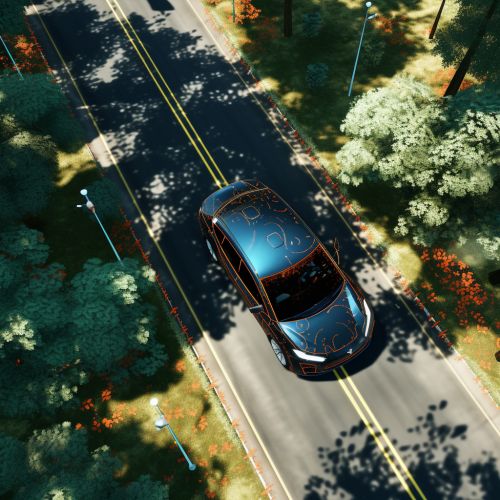Path Planning in Autonomous Vehicles
Introduction
Path planning is a critical aspect of autonomous vehicle technology. It involves the process of defining a route or path for the vehicle to follow from a starting point to a destination, avoiding obstacles and ensuring safe navigation. The complexity of path planning arises from the need to make real-time decisions in dynamic environments, taking into account various factors such as traffic, road conditions, and vehicle dynamics.


Path Planning Algorithms
There are several path planning algorithms used in autonomous vehicles, each with its unique strengths and weaknesses. These algorithms can be broadly categorized into deterministic, stochastic, and learning-based algorithms.
Deterministic Algorithms
Deterministic algorithms, such as the A* algorithm and Dijkstra's algorithm, are based on graph theory and provide a guaranteed solution if one exists. These algorithms are generally efficient and reliable, but they may not be suitable for complex environments with many dynamic obstacles.
Stochastic Algorithms
Stochastic algorithms, such as the Rapidly-exploring Random Tree (RRT) and Probabilistic Roadmap (PRM), use random sampling to explore the environment. These algorithms are particularly useful in high-dimensional and complex environments, but they do not guarantee an optimal solution.
Learning-based Algorithms
Learning-based algorithms, such as Reinforcement Learning (RL) and Deep Learning (DL), use machine learning techniques to learn from experience and improve their performance over time. These algorithms can handle complex environments and dynamic obstacles, but they require a significant amount of training data and computational resources.
Path Planning Process
The path planning process in autonomous vehicles involves several steps, including map creation, localization, path generation, and path execution.
Map Creation
Map creation involves the creation of a digital map of the environment, which includes information about roads, intersections, traffic signs, and other static elements. This map is typically created using data from various sensors, such as LiDAR, radar, and cameras, as well as pre-existing map data.
Localization
Localization involves determining the precise location of the vehicle within the map. This is typically achieved using a combination of GPS data, sensor data, and map data, using techniques such as Kalman filtering and particle filtering.
Path Generation
Path generation involves generating a feasible path from the current location to the destination, taking into account the map, the vehicle's dynamics, and the traffic rules. This is typically achieved using one of the path planning algorithms mentioned earlier.
Path Execution
Path execution involves following the generated path, while continuously monitoring the environment and adjusting the path as necessary. This is typically achieved using a combination of control algorithms and feedback from the vehicle's sensors.
Challenges in Path Planning
Despite the advancements in path planning algorithms and technologies, there are several challenges that need to be addressed. These include dealing with dynamic environments, ensuring safety, and handling uncertainty.
Dynamic Environments
One of the main challenges in path planning is dealing with dynamic environments, which include moving obstacles such as other vehicles, pedestrians, and animals. This requires the path planning algorithm to be able to predict the future movements of these obstacles and adjust the path accordingly.
Safety
Ensuring safety is a critical challenge in path planning. The path planning algorithm must ensure that the vehicle follows traffic rules, avoids collisions, and behaves predictably to other road users. This requires the algorithm to take into account a wide range of factors, including the vehicle's speed, the distance to other objects, and the vehicle's braking capabilities.
Uncertainty
Handling uncertainty is another major challenge in path planning. Uncertainty can arise from various sources, such as sensor noise, map inaccuracies, and unpredictable behavior of other road users. This requires the path planning algorithm to be robust to uncertainty and able to make decisions under uncertainty.
Future Directions
The field of path planning in autonomous vehicles is continuously evolving, with new algorithms and technologies being developed. Some of the future directions in this field include the use of more advanced machine learning techniques, the integration of path planning with other aspects of autonomous driving, and the development of standards and regulations for path planning.
Advanced Machine Learning Techniques
Advanced machine learning techniques, such as deep reinforcement learning and generative models, are expected to play a significant role in the future of path planning. These techniques can potentially handle complex environments and dynamic obstacles more effectively than current algorithms.
Integration with Other Aspects of Autonomous Driving
The integration of path planning with other aspects of autonomous driving, such as perception and control, is another important future direction. This integration can potentially lead to more efficient and robust autonomous driving systems.
Standards and Regulations
The development of standards and regulations for path planning is also a critical future direction. These standards and regulations can help ensure the safety and reliability of autonomous vehicles, as well as facilitate their widespread adoption.
